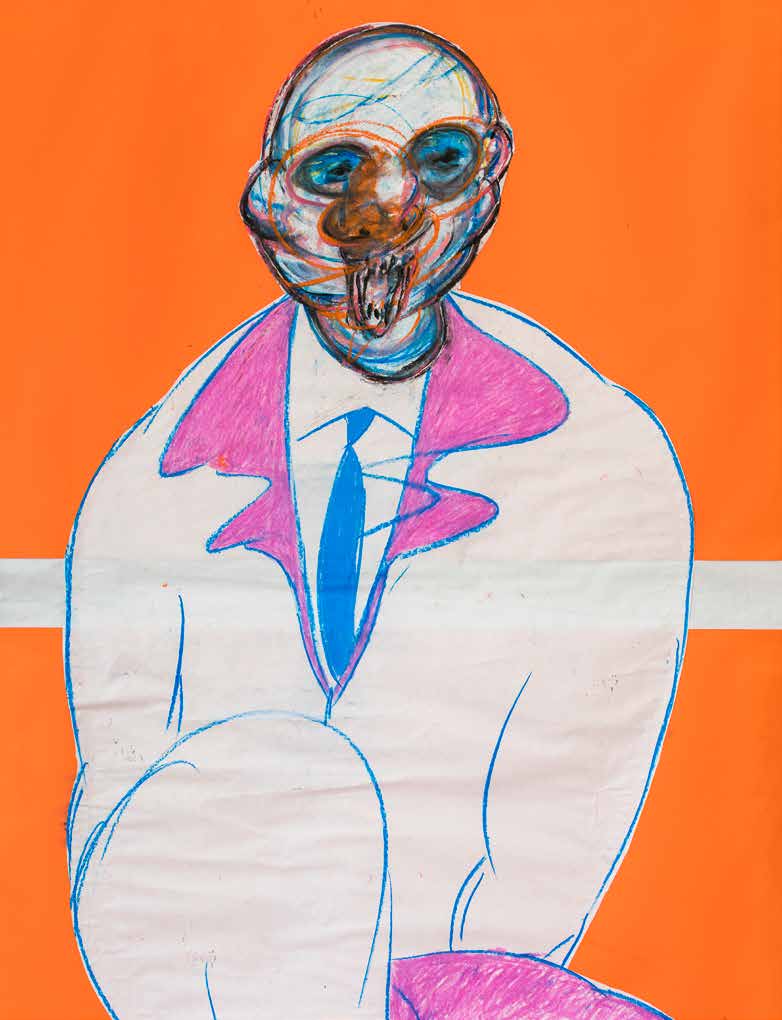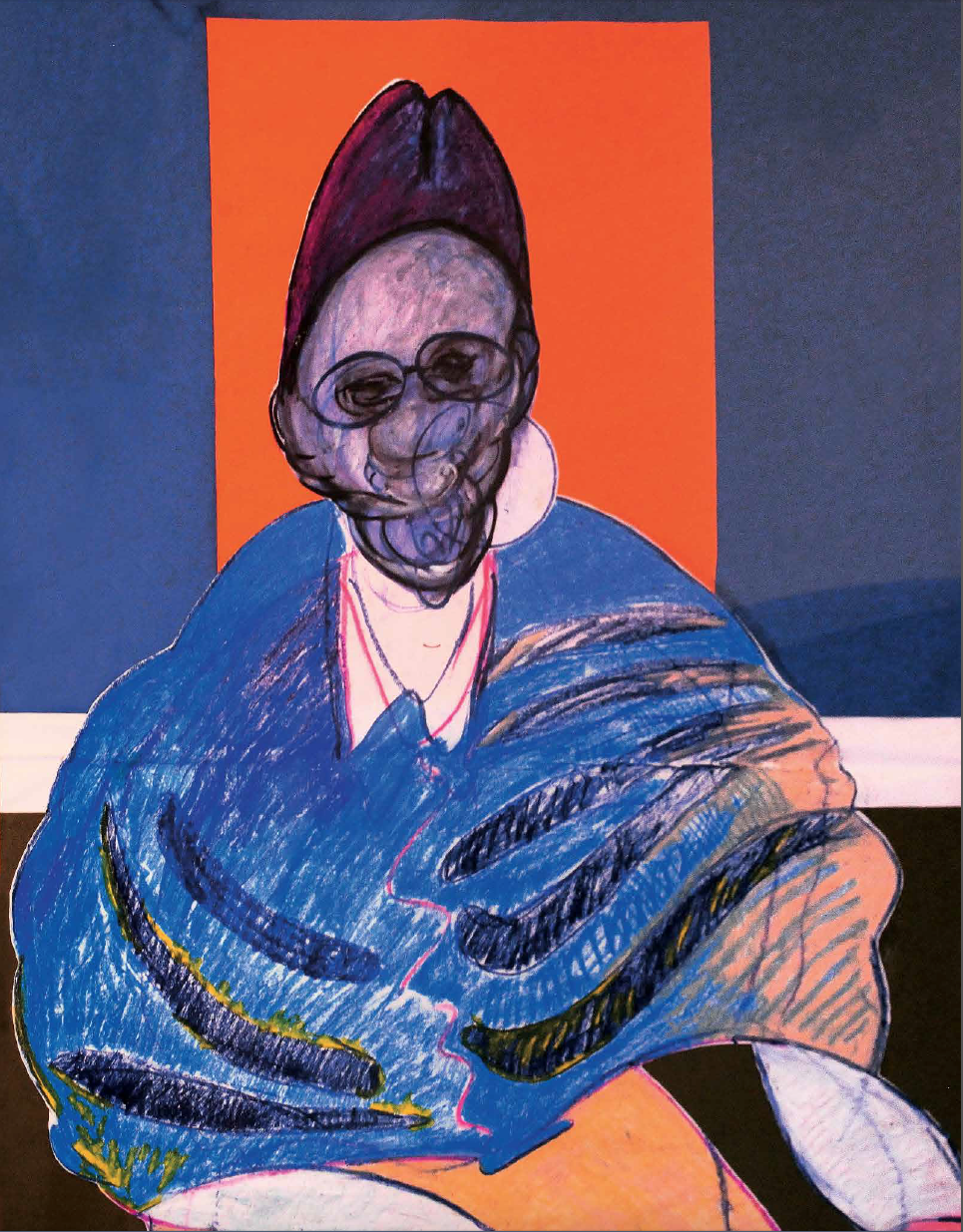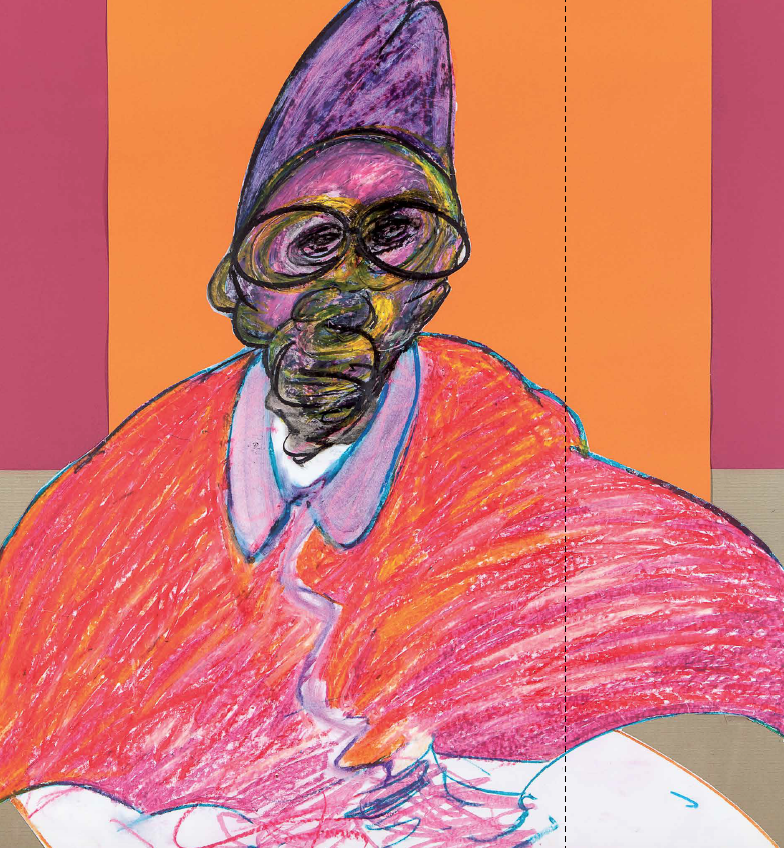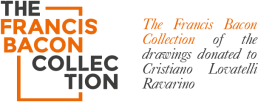January 2017 – Air Magazine Nasjet
Francis Bacon knew how to stir up a commotion, and his latest visual sizzler in Treviso is no exception.
A curated exhibition of his drawings from 1977 to 1992 has ignited wild controversy, and comes armed with radical aesthetics plus the baring of a tortured soul
Did Francis Bacon draw? Long before Francis Bacon: A Journey Through The Thousand Faces Of The Modern Man was even being considered as an exhibition, this was the primary contention that needed to be addressed. A batch of 600 drawings emerged after the master of grotesque’s death, which had allegedly been created and gifted by Bacon to a close friend over a 15-year period. It was the fierce art-world debate about their authenticity – not an affinity for the art itself – that drew Italian lawyer Umberto Guerini into the eye of the storm.
“In 1997,” he explains, “I started to follow the case of these drawings and to study in depth the life and the works of this great artist who has been part of my journey since then.” Guerini would go on to represent the owner of the works, Cristiano Lovatelli Ravarino, who is resolute that the hoard of pictures was given to him during a relationship that endured until Bacon’s passing. Says Guerini, “Since 2009, the drawings of the collection have been displayed in museums and art galleries all over Europe, Latin America and Asia. Their showcase is usually accompanied by the publication of documents, including legal deeds, which represent and demonstrate their story so that every person can feel free in evaluating them. Art historians and critics at any level did talk about them: some of them were sceptical while others – very few, to be honest – rejected them in a biased way. Some of the latter group think that Francis Bacon deserves to be placed inside a temple and worshipped accordingly; [the exhibition’s curator] Edward Lucie Smith defines these people as ‘groupies’.”
I mention the rumblings about the drawings’ authenticity not to undermine the power of what is an enrapturing exhibition; merely to spotlight the due diligence being committed to honouring artistic integrity. For this collection, expert inquiry led to The Challenges Of Authenticity: Francis Bacon, A Case Study, which was presented at the Courtauld Institute of Art in London. In Guerini’s opinion, “Regardless of how you may qualify them, the answer remains the same: culture and arts are free. That is why we will continue to display these works. We will also continue to carefully consider the opposing opinions that are expressed; we would like our opponents to do the same thing because, in front of the historical, documented, critical and scientific evidence we gathered and published, they continue to provide their trite biases. They act as guardians of a temple that Francis Bacon would have certainly destroyed.”
To the art itself, as this is not about what Bacon could tear down, but what he could create. Guerini (whose capacity is now that of the lengthily titled Chairman of FBC – The Francis Bacon Collection of the Drawings Donated to Cristiano Lovatelli Ravarino) explains that this exhibition’s title theme is key “in understanding the show itself: a journey through ourselves, accompanied not so much by reason but by what [art philosopher] Gilles Deleuze called ‘the logic of sense’. A path without filters that gets into the soul of visitors, leaving them alone in front of the self-portraits and images of both Bacon’s friends and society icons.” Lucie Smith believes all the ‘classic’ themes of Francis Bacon’s arts are represented here, on paper: “The artist seems to look back at his first production, the one that made him famous, wondering if he could have done any better, if he could have been more radical. The walls along the exhibit path are painted in dark colours, so that the pieces on display can shine under an innovative light, explained by labels that quote some topical phrases of the thinkers Francis Bacon particularly loved.”
What artistic evolution can be observed here, exactly?“[His] drawing progressively became a style completely independent from painting, thus expressing more directly and effectively the artist’s soul. The use of collage and, as [Italian art historian] Maria Letizia Paoletti correctly states, the papier coupé of Picasso inspiration shows how Bacon wanted to try a three-dimensional effect in these drawings, something that cannot be found in his paintings,” Guerini responds. “I am a lawyer and not an art historian – however, in my view, the poetry of this great artist (who is also a refined and cynical intellectual) is expressed in a more direct and essential way in his works on paper than in a large part of his paintings.”
On my own Bacon Scale of Bleakness (where ‘1’ is his mild Study For Self-Portrait and ‘10’ is The Black Triptychs, through which he exorcised the sense of loss he felt after his long-term lover’s tragic suicide), this exhibition sits at a 6.5 – polarising sketches for a friend, from the hand of a methodical maelstrom during some relative downtime. “His creations from this period were dominated by the triptych, but the figures grew calmer and were set against flat expanses of colour,” says Guerini, adding that since the exhibition opened it doors, “Visitors have been amazed by [these] striking works, which open up horizons, taking them in a journey through the hell and heaven that we all experience in our lives. They may decide to accept the suggestions and references made by the curators, or to follow their own eyes and look at the drawings and pastels on exhibition alone; it’s a journey that will unveil many pleasant surprises.”
It’s a slice of Bacon’s anxiety about the modern condition, and as for the “mysteries” compelling art lovers to visit the Treviso exhibition, “They are manifold,” Guerini confesses. “But one is to follow the ‘logic of sense’ on an open journey through the drawn efforts of one of the great masters of modern art, who did not make concessions to anybody – not even himself – always looking for his face and his soul, staring at people with his eyes, that reflect ours.”
Francis Bacon: A Journey Through The Thousand Faces Of The Modern Man is at the Casa dei Carraresi museum in Treviso until 1 May. For more information, visit bacontreviso.it
January 2017 – Air Magazine Nasje WORDS: CHRIS UJMA



